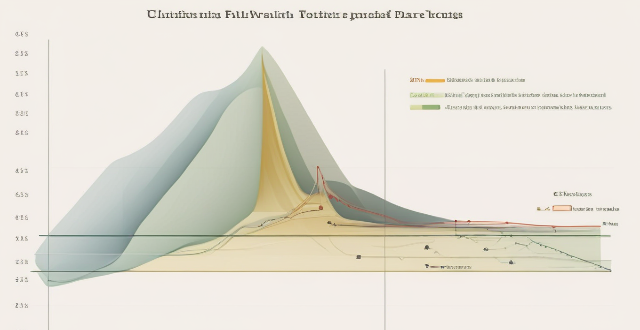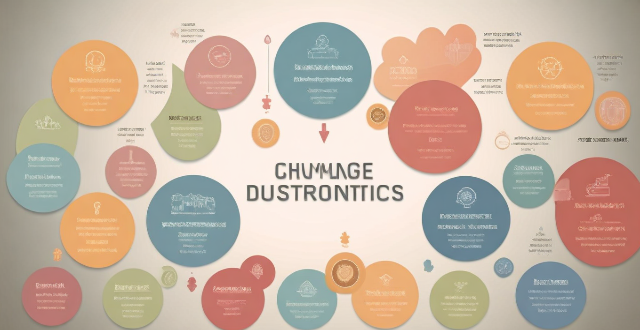Progress Climate

How has climate action evolved over the past decade, and what progress has been made ?
Over the past decade, significant strides have been made in the realm of climate action. This evolution is characterized by increased awareness, global mobilization, technological advancements, and policy changes aimed at mitigating the effects of climate change. Key aspects of this progress include: 1. **Increased Awareness and Global Mobilization**: Public awareness about climate change has grown substantially, thanks to educational initiatives, media campaigns, youth-led movements like Fridays for Future, and UNFCCC COP conferences. 2. **Technological Advancements**: Remarkable progress in renewable energy technologies, electric vehicles, energy efficiency, and carbon capture has been made. 3. **Policy Changes and Legal Frameworks**: Many countries have implemented policies to reduce greenhouse gas emissions and promote clean energy. The Paris Agreement set a global framework for combating climate change. 4. **Financial Investments and Market Mechanisms**: Green finance, carbon pricing, and investment in sustainable infrastructure are on the rise. 5. **Corporate Responsibility and Innovation**: Corporations are setting sustainability goals, managing their supply chains more sustainably, and consumers are choosing environmentally responsible products. 6. **Civil Society and Community Action**: Grassroots organizations lead community-based actions, local communities establish renewable projects, and NGOs advocate for stronger climate policies. 7. **Research and Collaboration**: Ongoing scientific research, international platforms, and open data initiatives foster collaboration and better understanding of climate solutions. 8. **Challenges and Setbacks**: Despite advancements, challenges remain, including political will, economic barriers, inequity, and loss and damage from climate change. In conclusion, while notable progress has been made in climate action over the past decade, continued efforts across all sectors will be required to meet ambitious goals and limit climate change impacts.

How do countries measure their progress towards achieving climate goals ?
Countries measure their progress towards achieving climate goals through various indicators and metrics. These include Nationally Determined Contributions (NDCs), greenhouse gas inventories, renewable energy production, carbon intensity, forest cover and land use changes, climate finance flows, policy implementation, and public awareness and participation. By tracking these factors, countries can assess their performance in reducing emissions, adapting to climate impacts, and supporting global efforts to combat climate change.

How can we measure progress towards achieving the Sustainable Development Goals ?
The text discusses the importance of measuring progress towards achieving the Sustainable Development Goals (SDGs) set by the United Nations in 2015. It outlines seven key steps to effectively monitor and evaluate this progress: establishing baseline data, tracking specific indicators, reporting and reviewing progress, utilizing technology, engaging stakeholders, addressing data gaps, and ensuring transparency and accountability. Each step includes a detailed explanation of methods and strategies to implement it successfully. The goal is to provide a structured approach for countries and organizations to assess their performance in meeting the ambitious objectives aimed at tackling global challenges such as poverty, inequality, and environmental degradation.

What is the Paris Agreement and how does it contribute to global climate governance ?
The Paris Agreement, adopted in 2015, is a landmark global climate change agreement aimed at limiting global warming to below 2°C and pursuing efforts to limit it to 1.5°C above pre-industrial levels. It contributes significantly to global climate governance by establishing mechanisms such as Nationally Determined Contributions (NDCs), enhancing transparency and accountability, providing finance and capacity building, addressing loss and damage, conducting global stocktakes, and setting long-term goals. These measures help track progress, hold countries accountable for their commitments, support vulnerable nations, assess collective progress, and encourage more aggressive action towards mitigating climate change.

How do you measure progress in students with special education needs ?
Measuring progress in students with special education needs (SEN) is crucial for understanding the effectiveness of interventions and ensuring appropriate education. Identify goals through Individualized Education Plans and focus on functional skills. Use formative assessments, standardized testing, and alternative assessments to monitor progress. Implement progress monitoring tools and analyze data to inform instructional decisions. Ensure accommodations and modifications are effective and regularly updated. Maintain open communication with parents and collaborate with a team to support the student's development.

How do I measure progress in my sports training plan ?
Measuring progress is crucial for athletes to track development and adjust their training plans. Set SMART goals, track performance, evaluate technique, monitor body composition, assess fitness level, and reflect on mental state to measure progress effectively.

What methods can be used to assess a child's progress in homeschooling ?
In recent years, homeschooling has become a popular option for parents who prefer to educate their children at home. However, assessing a child's progress in homeschooling can be challenging for both parents and educators. In this article, we will discuss some methods that can be used to evaluate a child's academic and personal growth in a homeschooling environment. Regular testing and evaluations are one of the most effective ways to assess a child's progress in homeschooling. This can include standardized tests, such as the Iowa Test of Basic Skills or the Stanford Achievement Test, which measure a child's knowledge and skills in various subject areas. Additionally, parents can create their own tests and quizzes based on the curriculum they are using. Another method for evaluating a child's progress in homeschooling is through portfolio assessment. This involves collecting samples of a child's work over time, such as writing assignments, science projects, art pieces, and other creative endeavors. By reviewing these samples, parents and educators can gain insight into a child's strengths, weaknesses, and overall development. Observing a child's daily activities and keeping a record of their progress through journaling can also be an effective way to assess their development in homeschooling. Parents can observe their child's behavior during lessons, note any challenges or successes, and track their progress over time. Finally, receiving feedback from others can provide valuable insights into a child's progress in homeschooling. This can include feedback from tutors, online teachers, or even family members who have observed the child's learning process. By gathering input from multiple sources, parents can gain a more comprehensive understanding of their child's academic and personal growth. In conclusion, assessing a child's progress in homeschooling requires a combination of methods, including regular testing and evaluations, portfolio assessment, observations and journaling, and feedback from others. By utilizing these strategies, parents and educators can gain a better understanding of a child's academic and personal growth and make informed decisions about their educational journey.

How can I track my progress if I'm only exercising at home ?
**Tracking Progress in Home Exercises** When working out at home, monitoring your progress helps you stay motivated and makes adjustments to your routine. Here are key strategies: 1. **Set Clear Goals:** Divide goals into short-term (e.g., increasing push-ups) and long-term (e.g., weight loss). Ensure they're specific and achievable. 2. **Keep a Workout Journal:** Record details of each session, reflect on what works, and make necessary changes. 3. **Use Technology:** Fitness apps and smart devices can track metrics like steps and heart rate. 4. **Take Measurements:** Regularly measure weight, body fat, and performance metrics to see physical changes. 5. **Evaluate Intensity and Recovery:** Use RPE to assess workout difficulty and monitor recovery times after exercise. 6. **Compare Against Baseline:** Regularly reassess initial measurements and performances to gauge improvement. 7. **Utilize Visual Cues:** Photos and mirror checks can show changes in your physique over time. 8. **Engage in Strength Training:** Track the weight lifted and rep maxes to indicate strength gains. 9. **Focus on Feel and Function:** Pay attention to how your body feels during workouts and improve the quality of movement. By employing these methods, you can effectively track your progress while exercising at home, ensuring consistent improvements and maintaining motivation.

How much time should I dedicate daily to achieve rapid progress in a foreign language ?
To achieve rapid progress in a foreign language, itTo achieve rapid progress in a foreign language, iticate a significant amount of time it is crucial to dedicate a significant amount of time daily to practice and study, including both active and passive learning activities. Establishing a daily study routine, setting realistic goals, and maintaining consistency are key strategies for success.

Are there any apps or tools that can help me track my progress in understanding different texts ?
The text discusses various apps and tools that can help users track their progress in understanding different texts, including Reading Comprehension Apps like Quizlet and Khan Academy; Productivity Tools for Text Comprehension such as Evernote and Trello; Online Tools for Text Analysis like SparkNotes and CliffsNotes; and Personalized Learning Platforms like Adaptive Learning Systems. These resources provide features such as flashcards, video tutorials, annotations, note-taking, project boards, database views, plot summaries, character analysis, chapter-by-chapter breakdowns, close reading, personalized pathways, real-time feedback, and reading logs to aid comprehension and monitor progress.

How can governments use climate risk assessments to develop effective policies ?
Climate risk assessments help governments devise policies that address climate change by identifying vulnerabilities, prioritizing actions, developing targeted strategies, integrating sectors, engaging stakeholders, monitoring progress, and maintaining flexibility.

How can we measure climate vulnerability ?
Measuring climate vulnerability involves identifying relevant indicators, collecting data and information, analyzing vulnerability levels, prioritizing adaptation measures, and monitoring progress. This process helps identify areas most at risk from climate change impacts and develop strategies to reduce their vulnerability.

What is the status of climate finance commitments made during climate change negotiations ?
This text discusses the status of climate finance commitments made during climate change negotiations, highlighting their importance in mitigating and adapting to climate change. It outlines key points regarding financial commitments, progress towards targets, channels for finance, and the need for improved monitoring and reporting mechanisms. The text also explores the involvement of both the public and private sectors in climate finance, as well as the challenges and opportunities that exist in this area. Finally, it emphasizes the significance of increasing transparency, improving accountability, and exploring innovative financing solutions to ensure that these commitments result in meaningful actions to address climate change.

What are the implications of ignoring the views of climate skeptics on climate policy ?
Ignoring climate skeptics' views can lead to lack of diversity in thought, potential for misinformation, loss of public trust, opportunity costs, and polarization. Policymakers should consider diverse perspectives and engage with all stakeholders for effective solutions.

What is climate financing and why is it important for combating climate change ?
Climate financing is crucial for mitigating climate change by funding initiatives that promote renewable energy, sustainable infrastructure, and adaptation to climate impacts. It enables international cooperation, drives innovation, supports policy development, and encourages private sector participation. Furthermore, it contributes to achieving global goals and enhances public awareness about climate issues.

How do international climate agreements influence national climate policy assessments ?
International climate agreements influence national climate policy assessments by setting global goals and targets, providing guidance on best practices, facilitating technology transfer and cooperation, enhancing transparency and accountability, and offering financial support for climate action. Examples of such agreements include the UNFCCC, Kyoto Protocol, and Paris Agreement.

How do climate summits contribute to global efforts to combat climate change ?
Climate summits play a crucial role in the global fight against climate change by setting targets and goals, encouraging international cooperation, promoting policy and technological innovation, raising awareness and mobilizing action, and financing climate action.

What is a climate summit ?
A climate summit is a meeting where international participants discuss and negotiate solutions to address climate change challenges. They focus on reducing emissions, adapting to impacts, and promoting sustainable policies through agreements informed by scientific evidence. Notable summits include the Earth Summit and COP conferences.

How can we involve community members in climate adaptation planning ?
Community engagement is crucial for successful climate adaptation planning. To involve community members, identify and engage stakeholders, develop a stakeholder engagement plan, use multiple channels of communication, involve community members in decision making, provide training and education, foster partnerships and collaboration, and monitor and evaluate progress. By doing so, you can create a more resilient community that is better prepared for the impacts of climate change.

What role do governments play in implementing climate action plans ?
Governments play a crucial role in implementing climate action plans by setting targets, enacting legislation, providing incentives, investing in research and development, regulating industries, raising public awareness, developing infrastructure, supporting innovation, and engaging in international diplomacy. These actions help reduce greenhouse gas emissions, promote sustainable development, and build resilience against the impacts of climate change.

Can climate variability be predicted accurately ?
Climate variability refers to the fluctuations in temperature, precipitation, and other weather patterns over time. While it is difficult to predict climate variability with complete accuracy, scientists have made significant progress in understanding and forecasting these changes using a combination of observational data, climate models, and other tools. Factors contributing to climate variability include solar radiation, volcanic eruptions, human activities, ocean circulation, and El Niño Southern Oscillation (ENSO). Tools used for climate prediction include global climate models (GCMs), remote sensing, palaeoclimatology, weather stations and buoys, and reanalysis data. Continued research and advancements in technology will help improve our ability to predict future climate scenarios and inform decision-making related to climate change adaptation and mitigation strategies.

How do climate change negotiations tackle the issue of climate justice ?
Climate change negotiations address the issue of climate justice by recognizing the disproportionate impacts on vulnerable populations, promoting equitable access to resources and technologies, adhering to the principle of common but differentiated responsibilities, ensuring inclusivity in negotiation processes, addressing loss and damage, promoting sustainable development, setting long-term goals and ambitions, and maintaining accountability. These efforts aim to create a more equitable and resilient global response to the challenges posed by climate change.

What are the most effective strategies for implementing climate decisions ?
Effective strategies for implementing climate decisions include developing a clear vision and goals, building a multi-stakeholder coalition, creating an action plan, implementing policies and regulations, fostering innovation and technology development, engaging the public and building consensus, and monitoring progress. These steps require careful planning, collaboration, and ongoing evaluation to address the urgent challenge of climate change and create a more sustainable future for all.

What is the significance of greenhouse gas emissions targets in climate change negotiations ?
Greenhouse gas emissions targets are vital for climate change negotiations as they set clear goals, promote international cooperation, have economic implications, protect the environment, and ensure accountability. These targets help countries measure progress, hold each other accountable, and achieve necessary reductions to prevent catastrophic climate change.

How can we involve vulnerable communities in climate action planning and implementation ?
Involving vulnerable communities in climate action planning and implementation is crucial for creating effective, equitable, and sustainable solutions to the climate crisis. Here's how we can ensure their involvement: 1. Identify and engage with vulnerable communities through community meetings, workshops, and consultations. 2. Build trust and capacity within these communities by involving them in decision-making processes, providing regular updates on progress, demonstrating transparency and accountability, and offering training programs on climate change science, policy advocacy, and project management skills. 3. Collaborate with vulnerable communities to develop solutions that address their specific needs and priorities while being culturally sensitive and respectful of local traditions and practices. 4. Regularly monitor progress towards climate action goals and evaluate the impact of initiatives on vulnerable communities by collecting data on changes in environmental conditions, economic opportunities, and social wellbeing, as well as seeking feedback from community members.

What strategies can companies implement to mitigate the impact of climate change on their supply chains ?
Companies can mitigate the impact of climate change on their supply chains by conducting a climate risk assessment, developing sustainable sourcing policies, implementing energy efficiency measures, investing in renewable energy sources, collaborating with suppliers and partners, monitoring performance, encouraging innovation and technology adoption, and engaging with stakeholders.

Can we achieve the SDGs without addressing climate change ?
The text discusses the interdependence between achieving the Sustainable Development Goals (SDGs) and addressing climate change. It highlights how various SDGs are directly impacted by climate change, such as health and well-being, food security, economic growth, and social equity. The text also explains how pursuing the SDGs can contribute to climate action through initiatives in energy innovation, sustainable consumption, urban planning, and global partnerships. It further outlines challenges that may arise if climate change is not addressed, including loss of biodiversity, water scarcity, migration, and economic instability. The conclusion emphasizes the need for an integrated approach that considers climate action in efforts to achieve the SDGs, ensuring a more resilient future for all.

What are the main goals of the Glasgow Climate Pact ?
The Glasgow Climate Pact, adopted at the 26th United Nations Climate Change Conference (COP26) in November 2021, aims to combat climate change by keeping global temperature rise below 2 degrees Celsius and striving to limit it to 1.5 degrees Celsius. The main goals of the pact are urgent action on climate change, strengthening global cooperation, providing adequate finance for climate action, balancing mitigation and adaptation efforts, and ensuring transparency and accountability in climate action. Countries must take immediate steps to reduce greenhouse gas emissions, invest in adaptation measures, work together to develop effective climate policies, mobilize resources from public and private sectors, strike a balance between mitigation and adaptation efforts, and establish clear reporting mechanisms and monitoring systems to track progress towards achieving climate goals.

What is the significance of setting short-term versus long-term climate targets ?
The article emphasizes the importance of setting both short-term and long-term climate targets to effectively address climate change. Short-term targets focus on immediate actions, creating urgency, measurable progress, immediate benefits, and building momentum for more ambitious goals. Long-term targets ensure sustainability, deep decarbonization, adaptation, and global cooperation. Achieving these goals is crucial for mitigating the worst effects of climate change and creating a more resilient future.

How do we measure the success of a climate policy ?
Measuring the success of climate policies involves monitoring key indicators such as reductions in greenhouse gas emissions, shifts in energy consumption patterns, changes in deforestation rates, and increased public awareness and participation. Methods of evaluation include data collection and analysis, comparative studies, modeling and projections, and stakeholder feedback. A combination of quantitative and qualitative assessments is necessary for a comprehensive understanding of policy impacts, ensuring that climate policies consider environmental, social, and economic factors for sustainable and equitable outcomes.